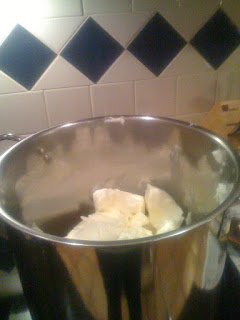So when things fell apart, we spent a few months convincing ourselves things had not fallen apart. We tossed and turned all night; we ate our own livers with nervous fear.
I'd also been for a long time feeling overwhelmed and sad about the destructive way we live -- eating factory farmed food that treats animals like objects and the earth like a big trash can, stuff made in a world economy that treats people in other countries like objects, excessive and obscene habits of consumption that we pass on to our children.
I'd also been for a long time feeling overwhelmed and sad about the destructive way we live -- eating factory farmed food that treats animals like objects and the earth like a big trash can, stuff made in a world economy that treats people in other countries like objects, excessive and obscene habits of consumption that we pass on to our children.
Then it occured to me that true security and peace is not based on how much we earn, how much we invest, or how much we own, but on how we live. True security is based on not needing a whole lot, on being creative producers instead of mindless consumers.
I set out to reevaluate and transform our lives. In just a few months I feel like we're living different lives. We sleep better; we work together on projects; our house looks better. We spend less and less time shopping and more and more time living.
In some ways, we're still in the easy part. We're in charted territory. Who knows what the future holds.
In some ways, we're still in the easy part. We're in charted territory. Who knows what the future holds.
But we've made such progress. I've said before that I never set out precisely to save money. The idea was to create the kind of life that would feel relaxed, peaceful, secure, and useful. Nevertheless, I have been astonished at how much less we spend than we used to. In part, this is because we spent so carelessly in the past. In our own defense, most people that we know spend just as carelessly, perhaps more so, than we do. Nevertheless, it's true. We spent what we earned on things that ended up in landfill as fast as people lost faith in Bernie Madoff.
These few months have been just us picking the low hanging fruit off the vine. It's been making the easiest, most pleasurable changes first -- the ones that help us live better, from an economic, environmental, pleasure-creating, and ethical standpoint. Here are some examples:
1) Heating bills: I really love warm weather and like to keep the house warm in winter. In fact Widget Man and I had compromised at keeping the house at 79 when he was home. When he left, I'd often turn it to 80, 81, even 82. Imagine my surprise when it turned out that trading a t-shirt, shorts, and bare feet for a sweater, pants, and socks meant that 65 degrees was plenty warm. We even turned the heat off altogether for weeks at a time. Now I can't imagine how I used to stand weird, hot, heater air blowing in my face all the time.
2) Turning off lights, powering down the computer and other electronics. Surprise! It's easy to flip off switches. Takes almost no upper body strength.
3) Limiting driving. Why didn't I implement this before? Driving is a torturous combination of boring and stressful.
4) Having no-shopping-at-all weeks. We just decided that for a particular week we'd buy nothing at all. What a relief and time saver.
5) A no disposable policy. I switched to cloth napkins, dishcloths, homemade scrubbers and glass food storage. We still have a few rolls of plastic wrap and aluminum foil, but I reuse this stuff until it falls apart. After these rolls are gone, I won't buy anymore.
6) All homemade cleaning products -- very easy, and much more effective than commercial products. Promise.
9) Eating our own fruits and veggies, from the garden. The only things I still buy are bananas, clementines, avocados and just recently, I caved and bought a pineapple. O tempting tropical fruits, why can't I quit you?
9) Cooking from scratch
10) Hanging out about half our laundry. I have a system for this that actually makes it easier than using the dryer. More on this later.
11) No more bottled water
12) Homemade bath soap, shampoo, conditioner, lotion, and deodorant. Better for your skin and better for the environment.
Like I said, these are just a few little things. More will come to me later, I'll bet.












